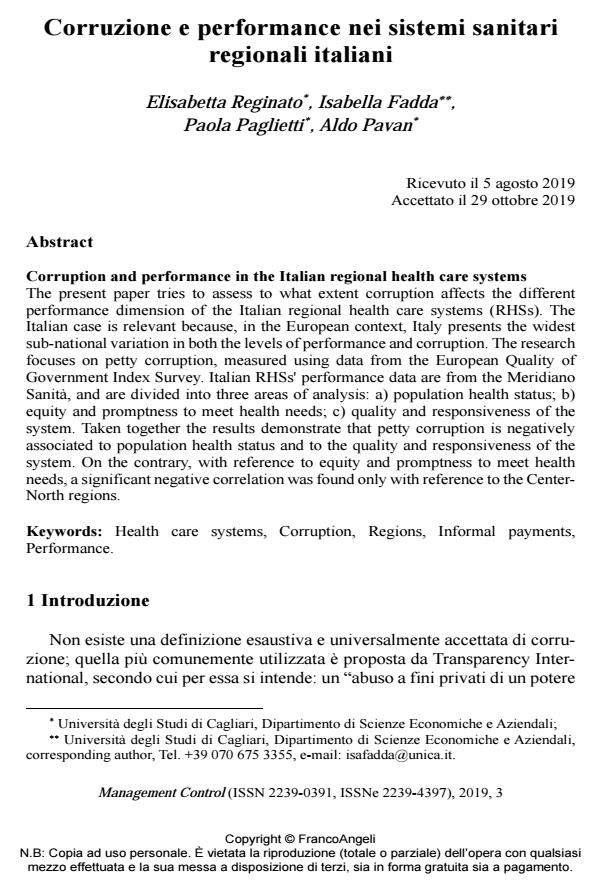Corruption and performance in the Italian regional health care systems
Journal title MANAGEMENT CONTROL
Author/s Elisabetta Reginato, Isabella Fadda, Paola Paglietti, Aldo Pavan
Publishing Year 2019 Issue 2019/3
Language Italian Pages 24 P. 123-146 File size 354 KB
DOI 10.3280/MACO2019-003007
DOI is like a bar code for intellectual property: to have more infomation
click here
Below, you can see the article first page
If you want to buy this article in PDF format, you can do it, following the instructions to buy download credits

FrancoAngeli is member of Publishers International Linking Association, Inc (PILA), a not-for-profit association which run the CrossRef service enabling links to and from online scholarly content.
The present paper tries to assess to what extent corruption affects the different performance dimension of the Italian regional health care systems (RHSs). The Italian case is relevant because, in the European context, Italy presents the widest sub-national variation in both the levels of performance and corruption. The research focuses on petty corruption, measured using data from the European Quality of Government Index Survey. Italian RHSs' performance data are from the Meridiano Sanità, and are divided into three areas of analysis: a) population health status; b) equity and promptness to meet health needs; c) quality and responsiveness of the system. Taken together the results demonstrate that petty corruption is negatively associated to population health status and to the quality and responsiveness of the system. On the contrary, with reference to equity and promptness to meet health needs, a significant negative correlation was found only with reference to the Center-North regions.
Keywords: Health care systems, Corruption, Regions, Informal payments, Performance.
- The Role of Citizens in the Municipalities' Risk Management Process: An Overview in Italy Monia Castellini, Vincenzo Riso, in MANAGEMENT CONTROL 1/2023 pp.143
DOI: 10.3280/MACO2023-001007
Elisabetta Reginato, Isabella Fadda, Paola Paglietti, Aldo Pavan, Corruzione e performance nei sistemi sanitari regionali italiani in "MANAGEMENT CONTROL" 3/2019, pp 123-146, DOI: 10.3280/MACO2019-003007